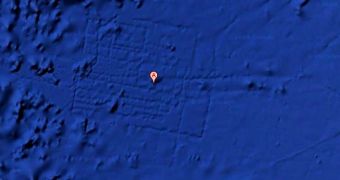A British aeronautical engineer, who by all accounts had too much time on his hands, discovered what could be the most important finding of the last centuries – namely, a portion of ocean floor that could be the lost city of Atlantis. He made the discovery while checking out images provided by Google Earth 5.0, a service that also hosts underwater data, as opposed to previous versions that only showed dry land. The company was quick to refute the spreading Internet rumors, saying that the images were just coincidences.
The United Kingdom's Press Association recently announced that the pattern found at the bottom of the sea, some 600 miles west of the Canary islands, closely resembles a layout of streets and city walls. The patterns indeed look like they were man-made, as you can check out here. According to legend, Atlantis was one of the most developed cities of its time, so it would make sense that they had city grids, just like modern cities.
Plus, as the Google image shows, the pattern is very well defined, in that it doesn't continue beyond a specific area. The ocean floor around it appears smooth, and the only irregularities (that in the eyes of some constitute the aforementioned street grid), are contained within a perimeter of approximately 100 square kilometers.
However, Google has a different opinion, “It's true that many amazing discoveries have been made in Google Earth, including a pristine forest in Mozambique that is home to previously unknown species and the remains of an ancient Roman villa. In this case, however, what users are seeing is an artifact of the data collection process. Bathymetric (or sea floor terrain) data is often collected from boats using sonar to take measurements of the sea floor. The lines reflect the path of the boat as it gathers the data.”
That may indeed be true, but it doesn't explain why only that area of the floor has such a clear pattern on it, whereas those around it exhibit a very smooth consistency. And right next to the alleged city, there are underwater mountains, which appear on the map very clearly, without any superimposed lines on them. Take a look at the picture and decide for yourselves.

 14 DAY TRIAL //
14 DAY TRIAL //